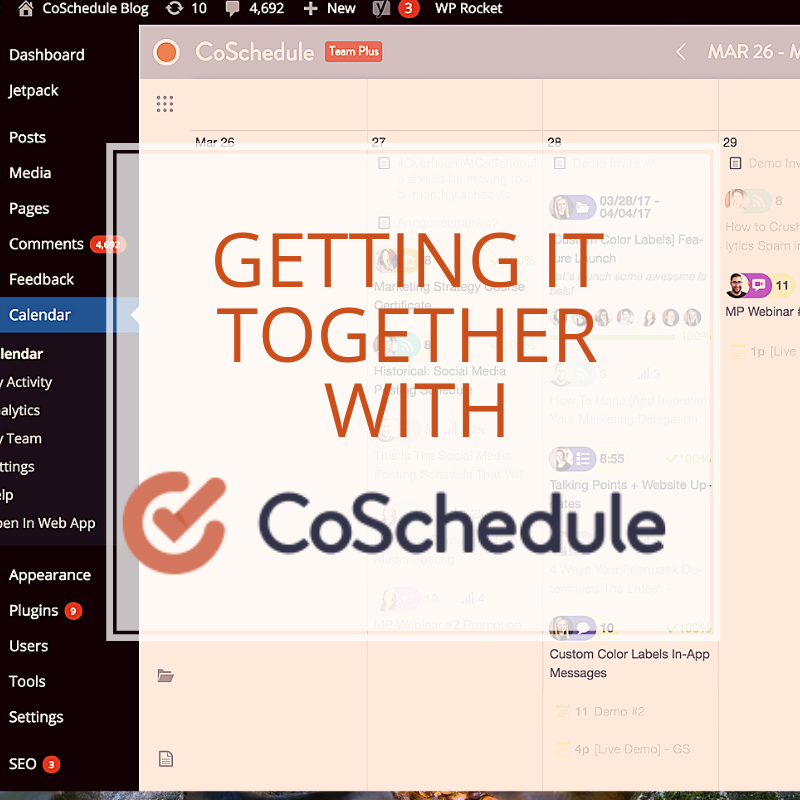
My first sponsored post – I am writing this review to reduce my subscription to a marketing tool that has the promise of helping me get it together to get the word out about my work (books, workshops and practice) with a bit more aplomb. If you follow the links in this post and decide to try coschedule too, I’ll get a little discount to my subscription.
Slow but sure. So far so good.
The Promise
The promise of Coschedule is that all my communication will be integrated – my monthly newsletter, weekly blog, and daily social activity will all be singing like a choir in tune. So that people – my people – my online tribe – will gather around my excellent teaching and together we will change this world. Influencers will gather about me, oohing and aahing. The perfect brands will also gather – the brands my readers may actually want, begging me to somehow get them in front of my readers.
Current State of Affairs
OK, phew. I used Coschedule for about a month before I took a pause to polish up an approaching retreat. In that time, things got started – not quite as quickly as I’d wished, but I did move forward. There was a bit of education as to how to think. Now, I have a MS in Communication and do have a marketing mindset, but this was different – thinking in terms of everything I do in terms of a campaign, or defining into some other communications thing, was a little next-level for me. I know I need to go there – it’s the natural next step for my blog and teaching. But, like life itself, it’s a process.
I’m excited by the possibilities of Coschedule, and can see the outline of how it works. Much of the learning within the app is geared toward team communication, and at this writing I am a solo entrepreneur looking to this app to be a certain type of automated assistant. As I begin to work with more organizations this may change and I guess it’s good to know that the app can expand as I grow, but right now, finding just the support that helps me fast-track what I am looking for is…not yet found. Taking a little more time and focus than I’d hoped. But, I’m back from my international travel and ready to dive in again.
So, I am going to try it – at this writing, I am thinking I’ll experiment with it for a year. But, it’s got to make me feel better (and save me time and mind-space) within a couple months of giving it a good try. I’ll measure my success in how well I reach new people who resonate with my work, how much my list grows, books sell, private practice fills, and how well my (under development) courses grow. Got it? I am going to watch and adjust and aim to grow. Hoping Coschedule helps me – and helps you.
Want to check it out? If you use this link, I will get a small discount on my subscription.
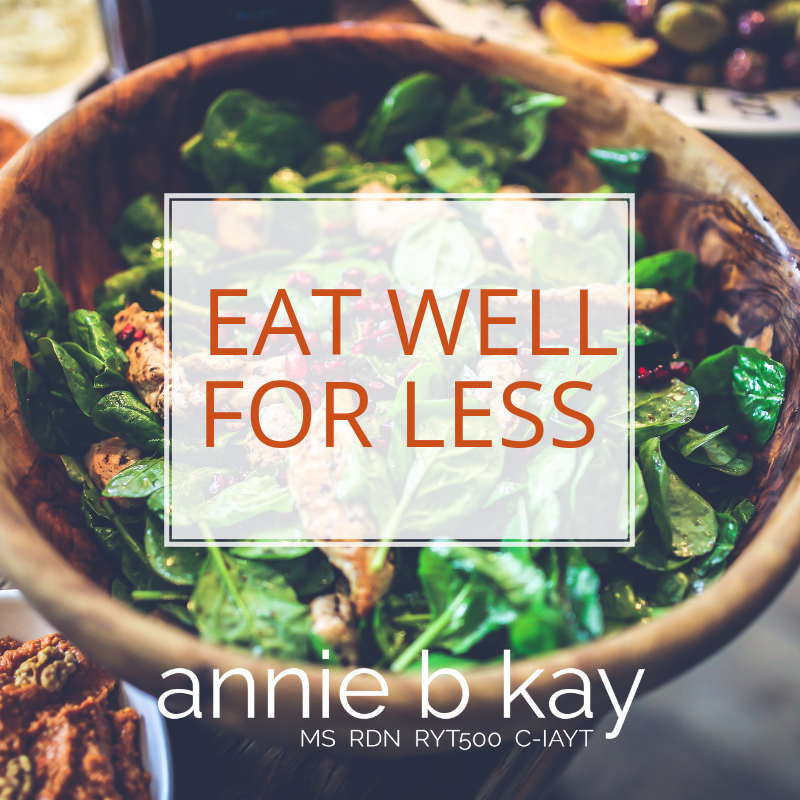
Quality food and produce – organics, artisanal, delicious – is more widely available than ever before. Yet when I check out from my whole foods grocery – especially when I’m preparing for a special holiday or family dinner, I imagine my father (a rural farmer cash-on-the-barrel sort of guy) fainting dead away at the grand total. Yipes! The price of high-quality (like organic grass-fed) meat or dairy, and fresh produce can take your breath away. You can eat well for less.
It takes some time and effort, but once you get into the swing of the practice, it’s just how you do it. The nutrition and taste benefits are very worth the effort.
If you feel the desire to eat high-quality food, but you aren’t independently wealthy, here are 7 ideas to help you eat well on a budget:
1. Try mindful eating.
Many Americans simply eat too much – be it healthy food or not. But just how much is enough? We’re designed to know. Mindful eating can help you find out how much food fills you up and gives you energy throughout the day. In fact, mindful eating is a practice that can help you turn down the external messages about what and how much to eat, and to tune in more deeply to your internal guidance system.
You can experiment by becoming a little more aware of the portion sizes you eat, and use mindful eating to help you experiment with just how much is enough. It’s a real sweet spot – adequate without over nor under-doing eating. It’s a practice for sure, and we humans by nature seem to over- or under-do it. So, if you struggle with this, you are not alone! Be patient and keep practicing.
How about an experiment – quality over quantity?
Begin by experimenting with mindfully eating various foods – from treats like designer chips, whole foods take-out, gourmet pizzas and stevia sweetened sodas to more healthful choices like fresh vegetables and fruit, beans, nuts and whole grains. See how different foods make you feel, and how much seems to be enough to satisfy and give you energy through the day (I know, easier said than done). Eating lightly (and for some, passing on snacking) can be both healthful and cost-effective. The practice of mindful eating is a great place to begin to explore just what eating lightly means for you.
2. Enjoy plants.
If you have more than one serving of animal protein each day, you may be healthier and more frugal to look to plant-based protein to replace some of the meat and dairy you’re eating. Need some ideas on a delicious way to focus on plant fare? Check out my recipe page, and my friend The Veggie Queen, who dedicates her working life to helping you enjoy more plants easily.
3. Consider a CSA or community food CO-OP.
Cut out the middleman and ensure the freshest local produce makes it into your kitchen all season long through a direct relationship with a local farm. To get stared check out Local Harvest. They will tell you how to get into the mindset, prepare to join, and help find your nearest community-supported agriculture (CSA) farms and CO-OPs.
4. The bulk food aisle (or discount website) is your friend.
Get a break on nuts, spices, whole grains and just about everything beyond fresh produce. If you don’t live near a grocery store that offers bulk staples, of course the internet marketplace is there wherever you are. The Spruce has a good article on their favorite online grocery sites.
5. Browse your market’s circular.
If you are so inclined to browse your supermarket’s circular, you really can shave a lot off your weekly food costs. My husband (astonishingly) does this as a practice – he plans our shopping around the meat and seafood that is on sale – and he is truly amazing at it. The deals he gets are phenomenal! You do have to be aware that items on sale might not be the most healthful, so you need to practice discretion here.
6. Organic online coupons? Yep.
Check out All Natural Savings – a gal dedicated to online couponing – to get you started. Whole Foods also has a weekly deals and sales page. So many ways to use them to eat well for less.
7. Keep it all in perspective.
There’s a certain new math – a longer-term economics we need to consider when we think about the higher cost of clean whole food. That new equation is hidden beneath cheap subsidized corn, sugar, meat and dairy. As a nutritionist for the past 25 years I know that this cheaper refined food is responsible for a world of disease and pain. In my practice I see people improve their health every day through committing to higher quality nutrient-dense, low chemical load food. Most people feel better right away when they move away from the standard American diet and learn to make small choices toward health while enjoying what they eat and feeling great regardless of the number of the scale. The benefits continue to build over time with longer, healthier lives.
When it comes to quality food, no one can eat perfectly all the time unless they have limitless income, their own farm and a small team of vegetable choppers at the ready.
So, do what you can to eat well for less, and let the rest go. Small changes can add up, over time, to transformation.
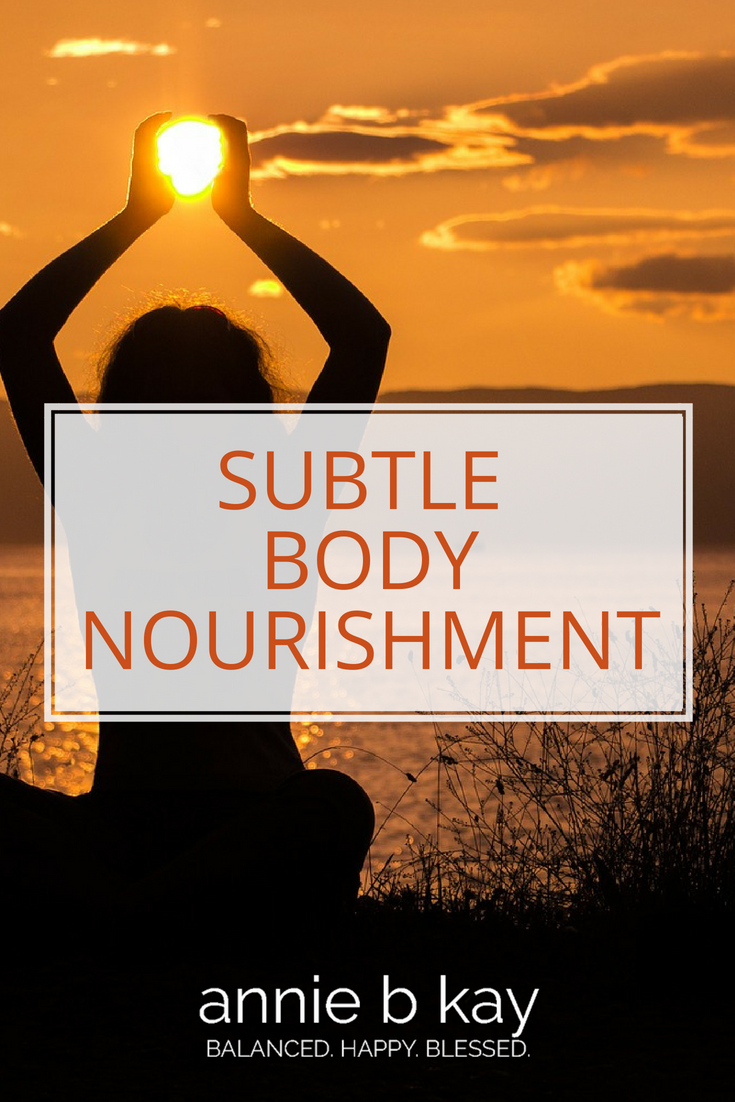
Getting the balance of eating and yoga practice down is a challenge for anyone. We overdo it, we under-do it, we practice when we’re full. We under-eat and don’t have the energy to perform. Sigh. Our energy, as well as our hunger peaks and valleys – getting it right is a dynamic dance.
Understanding and experiencing your own subtle body (in yoga, that includes your thoughts, intuition and energy bodies) takes practice. When you practice skillful navigation of your subtle body, particularly balanced with the knowledge of your nutritional needs, it can help prevent you from falling off a nutritional cliff of over- or under- doing it. This is especially handy once you begin the esoteric energy practices and learn that you have greater control over hunger and satiety that you’d realized. Then, having the wisdom of science to anchor you in adequacy is even more important to maintaining physical health.
That’s subtle body nourishment.
Why Bother? Benefits of Energy Practice
When you learn eating meditation techniques you are learning how to turn inward and participate in your body’s guidance systems – you have the option of taking more control – be it breath or eating or even thinking. That’s what all the hoopla is about. If we don’t understand that we are taking the steering wheel of hunger and satiety, it’s easy to under-eat once prana (life force, or energy as in your breath) starts expanding and getting excited. Then, it’s easy to overeat through your inevitable energy contraction.
Many a yogini seems to get into eating trouble when learning these more esoteric practices. It doesn’t have to be that way.
Life is an energy experience. Meditative practices are energy practices, and require that you spend time within your inner landscape – the more time you spend there exploring and curious, the better you will know and be able to navigate that landscape.
By learning how to operate your own subtle body, you can ultimately better navigate the chaos without getting overwhelmed by static. You can operate in a more intentional way.
This sort of practice brings consciousness to your personal energy ecology; the conditions under which you shine, for example.
Energy practice, meditation, mindfulness can help you learn how to improve your digestion – how to basically give your bodies what it needs (time and calm, primarily) to digest properly.
What is the Subtle Body?
In yoga philosophy, the subtle body is the aspect of you that is unseen by the human eye. It includes your thoughts and emotions, the wisdom aspect of you – your intuition, and your energy body.
The subtle body profoundly determines how you feel, react and respond to the world around us. When you learn how to guide your own thoughts, for example, you can literally change your perception of your own life. When you learn to ground your energy body, you can handle the spiral of chaos that the world at times seems to be, rooting in the real rather than swirling away in yet another frenzied tweet.
Food & Yoga Practice
The truth of the matter is that everyone is different – physically but also nutritionally. How well you can perform right after you eat, and the ideal makeup of a meal to fuel your practice is individual. There are, however, guidelines – rules of the road. Ayurveda practitioners say that certain foods create certain energies. Western science has their own version of the same idea – in a very different language. The language of macro and micro nutrition, and meal timing.
Ultimately, the way to figure out what works for you is to do the experiment. Notice how it works for you.
I’ve been thinking about subtle body nourishment and how food and practice interact in preparation for a gathering of souls at Kripalu July 8-11, Sunday through Wednesday morning. If these topics get interest you, consider joining me to practice, explore and learn about what the yogis and Western nutrition has to say about it.
Be well, practice on.
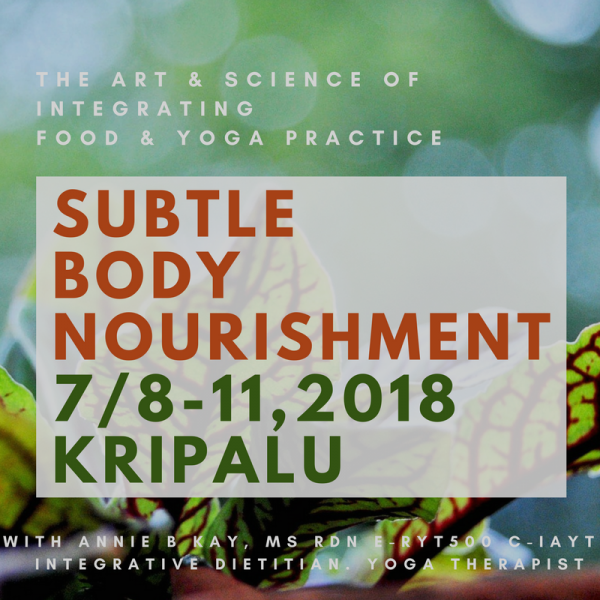
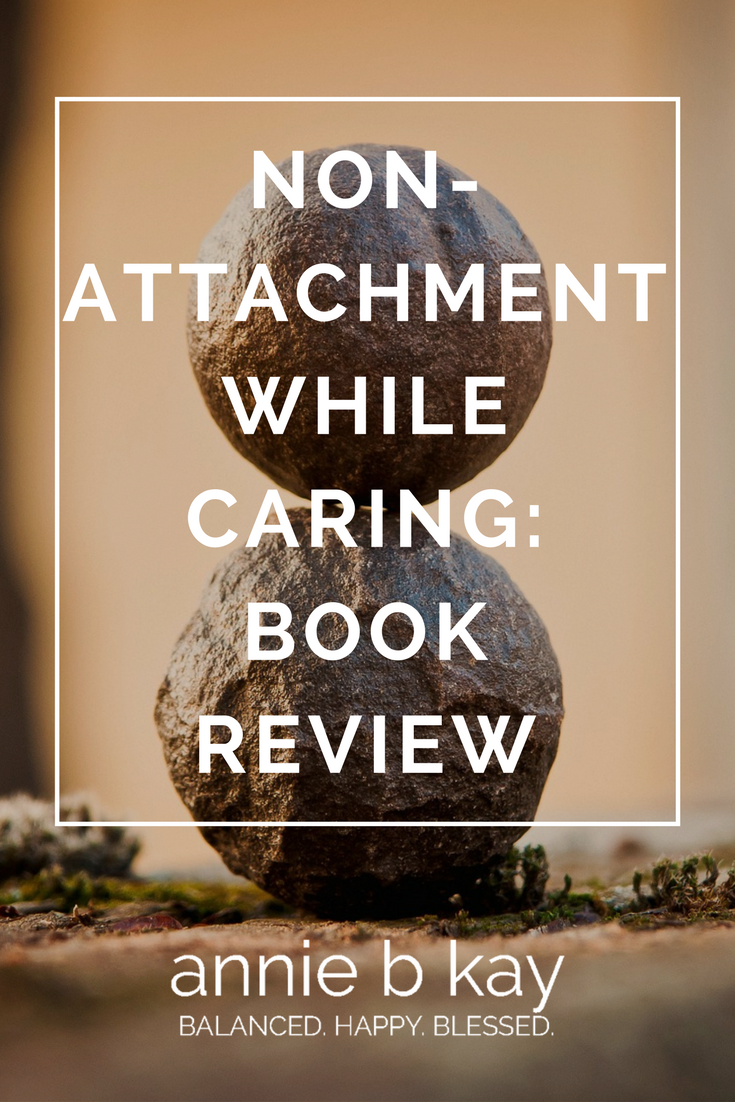
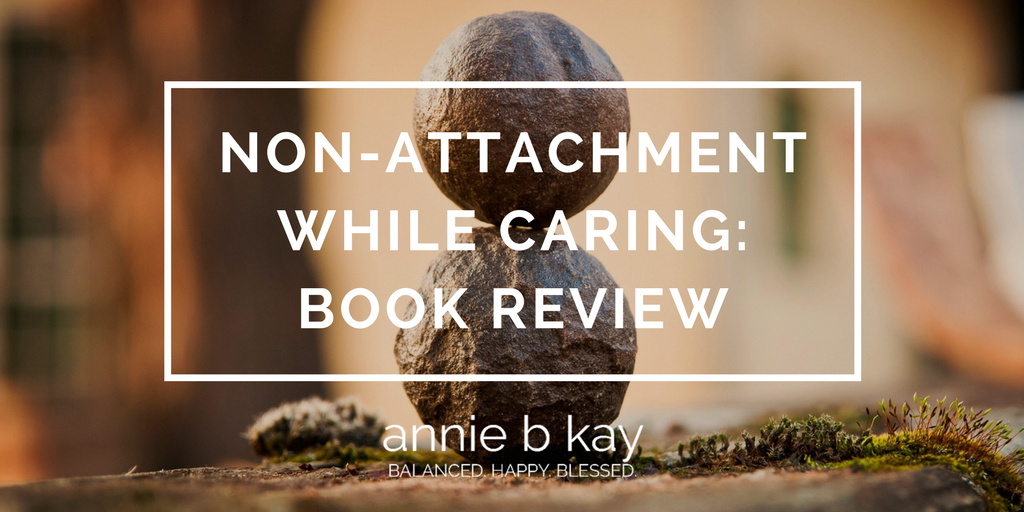
Since I’ve started reviewing books, I should mention the book that I carry with me. It’s in my bag, everywhere I go. All. the. time.
I pulled it out in Vieques when I felt left out for a few moments and ended up having lunch alone while my husband lunched at the next table over with a most attractive woman of his own age (we were all in love this one hot 65-year old Alaskan woman).
I pull it out when I see someone in a leadership position act, well, not like the leader we’d hoped for. I carry it with me. I pull it out when I feel outraged or like I’ve been unheard or cheated or judged. It helps me and reminds me to keep on keeping on the path I’ve chosen.
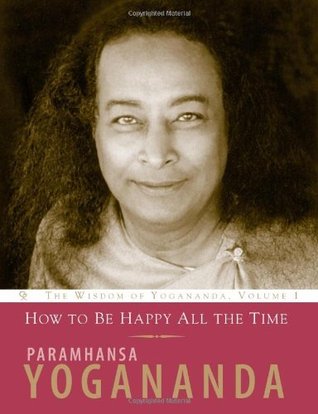 It’s How to Be Happy All the Time by Paramhansa Yogananda. The basic lesson is non-attachment. The message is there is absolutely nothing to get too excited about.
It’s How to Be Happy All the Time by Paramhansa Yogananda. The basic lesson is non-attachment. The message is there is absolutely nothing to get too excited about.
That doesn’t mean don’t care. Care. Please. Care enough to be loving and deeply connected with those close to you who are easy to love as well as those you don’t yet know enough to love, and even those you decidedly do not love in this moment. Just know when you get riled up, that’s your signal to practice. Calm down, look around and practice.
The set of reminders include excellent old saws: cultivate a positive state of mind, take care of your body, keep practicing and should difficulties comes along, know that we all have them, they are not personal (though they feel that way) and look for the good in challenges. Do your best to continue your practice. It’s a long explanation, really, on why we should meditate and how it makes us happier.
Here’s what Yogananda had to say:
“The most important condition for lasting happiness is even-mindedness. Remain ever calmly centered in the Self within. As a child’s sand castle disintegrates before invading waves, so does a restless mind, lacking strength of will and perseverance, succumb to the pounding it receives from the waves of changing circumstance.”
It’s a challenging path and at times an impossible practice. We, humans, have a pretty seriously stormy and tempestuous nature. Have you noticed? I get triggered a hundred times a day. But I find, if I practice, it makes life better – it makes me better. I make more reasoned decisions and can be more compassionate when people act in human and imperfect ways. I calm down and get clear. I can work on myself, take care of my side of the street.
Pick up a copy, carry it around and dip into it. Let it remind you to meditate. Let it remind you to practice self-care. Let me know if it helps.
To quote a Real Housewife of NJ: Namaste bitches!
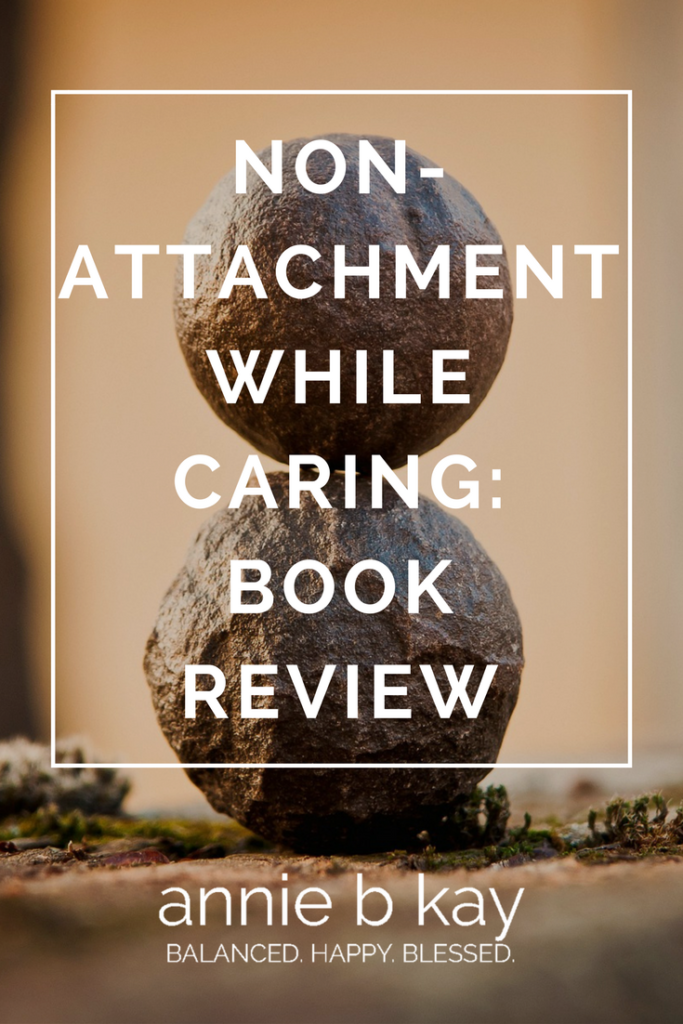
pinterest
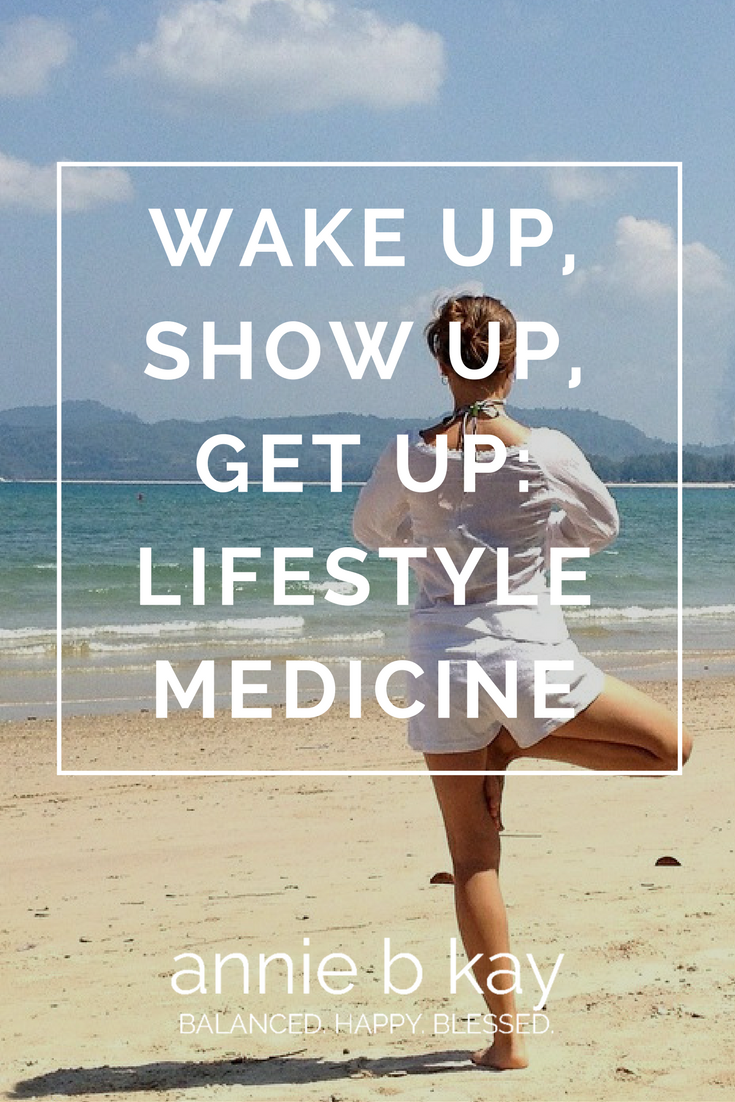
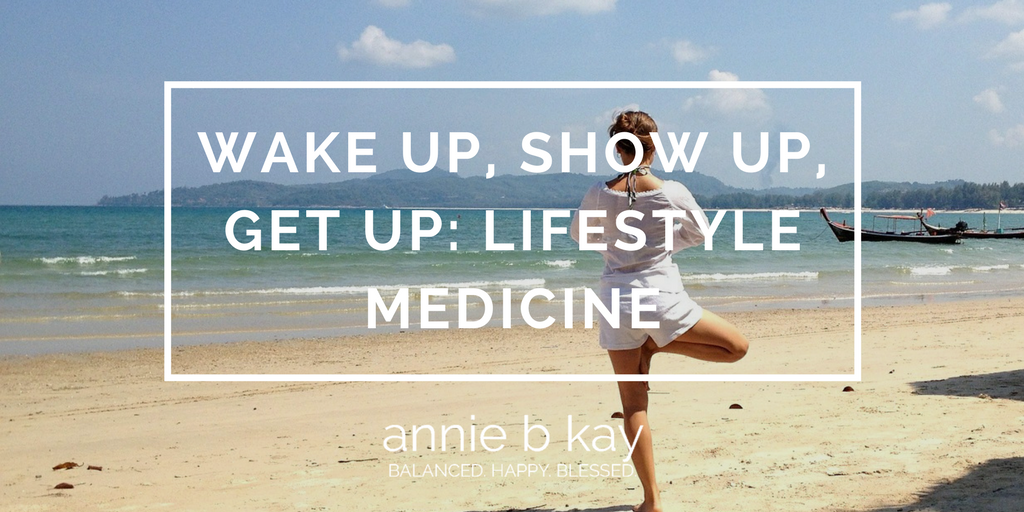
I’m hearing more about lifestyle medicine these days (thank goodness!), including another movie “What the Health” on the problems of “big health” (pharma-central health care and advocacy, processed food and other areas where $ over-rides health). Like life itself, it’s more complicated than good guys and bad guys. I love health advocacy groups, and taking funds from big pharma, is well, OK – so long as it funds lifestyle – and while pharma is often used when lifestyle ought to be the first line of treatment, drugs do save lives (with side effects). It’s just not black & white.
The American lifestyle – including:
- An over-processed, nutritionally devoid, inhumanly raised food supply,
- More sedentary lives,
- And inadequate ways of handling stress (we love us some comfort food & screen time).
All add up to bodies more likely to express the chronic disease tendencies in our family histories. We have so much room for improvement!
In the post-truth age, I am going to do my best to tell you my whole truth on this.
It’s hard to live well today.
It’s nearly impossible to eat well all the time. That’s OK, because you do not have to be perfect. If however you have biomarkers of disease (like high fasting blood sugar and A1c, lipid labs suggestive of cardiovascular disease) or symptoms (achy joints, weight gain, skin issues) that something is out of balance, you’ve gotta give it a try. You’ve just gotta keep trying. I love to eat and sometimes overeat (my 55 year-old metabolism is slowing down down down despite exercise, and that’s probably a good thing in the long run) so managing my weight is a constant companion. So, I practice.
It’s hard to get adequate physical activity. The evidence and advocacy groups say you need at least 30 minutes of moderate movement most days of the week. Ten-thousand steps might need to be elevated to fifteen (which doesn’t matter if you, like me, sometimes come in at the 1,000 range!). In order to be healthy, as you age, you’ve got to move. Quite a bit. As much as you can. Your life needs to be physical (even if you have limitations – if you can use your arms but not your legs, use your arms. There are a million ways to do it (I walk and clean and garden and do yoga and even, recently calisthenics classes – weights). I still need more. I sluff off. When I do it I feel better – less achy, higher energy. So I practice.
It’s hard not to get stressed out. Life is upsetting. We are past the Co2 tipping point, for goodness sake. That’s really bad news. We are losing a lot and need to learn to let go. But what we are losing often feels really important. And so it is. That’s why I carry around a book that helps me work on non-attachment. My own personal practice is non-attachment while caring. It’s tricky, but a really good practice. It works for me. So I practice.
So, what to do?
- To work lifestyle medicine – the heart of preventive health, or being in balance with the earth and our own bodies, we do need to wake up. To not buy the cultural norms being sold to us. To know that both fake news and true healing are alive and well in the food and health industries. Health is in the nuance – in the middle ground between fake and true.
- We have to know who we are and show up for our own lives in a real way. To be honest, I don’t care what you eat in any given moment. I do care if you enjoy it, and very much hope that you do. Whatever you decide to eat, decide to do, decide to be, do it all out, have fun with it, learn from it and carry on. There is a full, true, healthful version of you in there, and I so wish that you dance in that version more of the time.
- I can’t see a way around getting up. We have to participate in our lives in a physically and mentally active way in order to be healthy. We need to dance and clean and hunt and play golf and badminton and what ever else we love to do.
At this point in time, lifestyle medicine is a little radical – a little against the grain. It’s a little uncomfortable and might feel a little judgmental – who do you think you are, doing all that self-care?! That’s a really good questions.
Here’s my answer of who you are: you are a divine expression of God. That’s why you deserve to be your fullest expression. That’s why you deserve to take fantastic care of yourself.
Go forth and practice! Let your freak flag fly!
L,
Annie
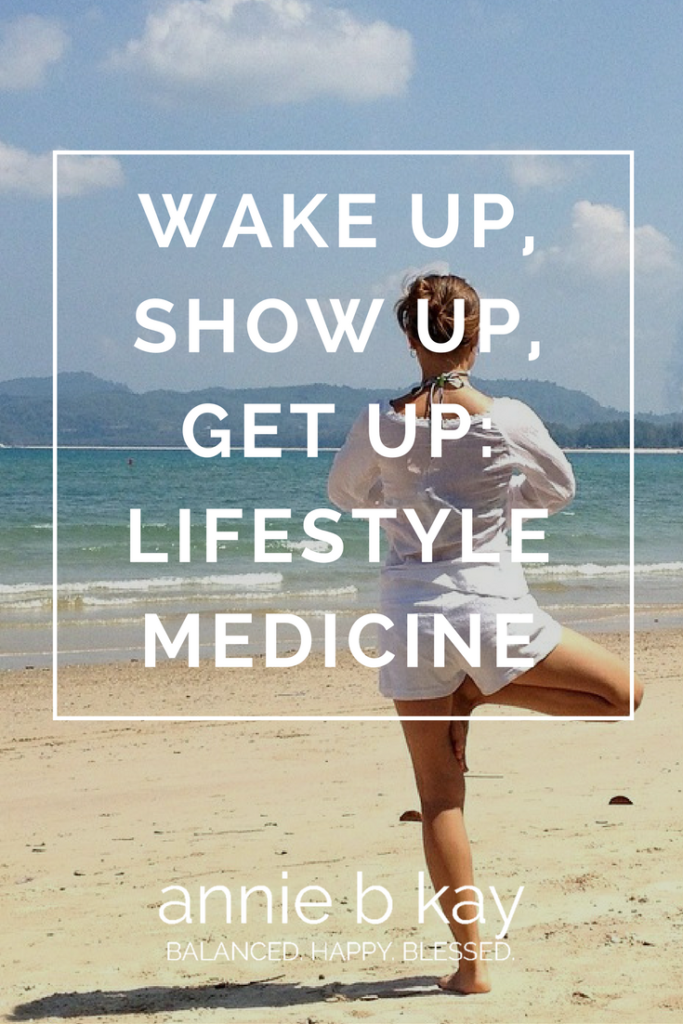
Pinterest
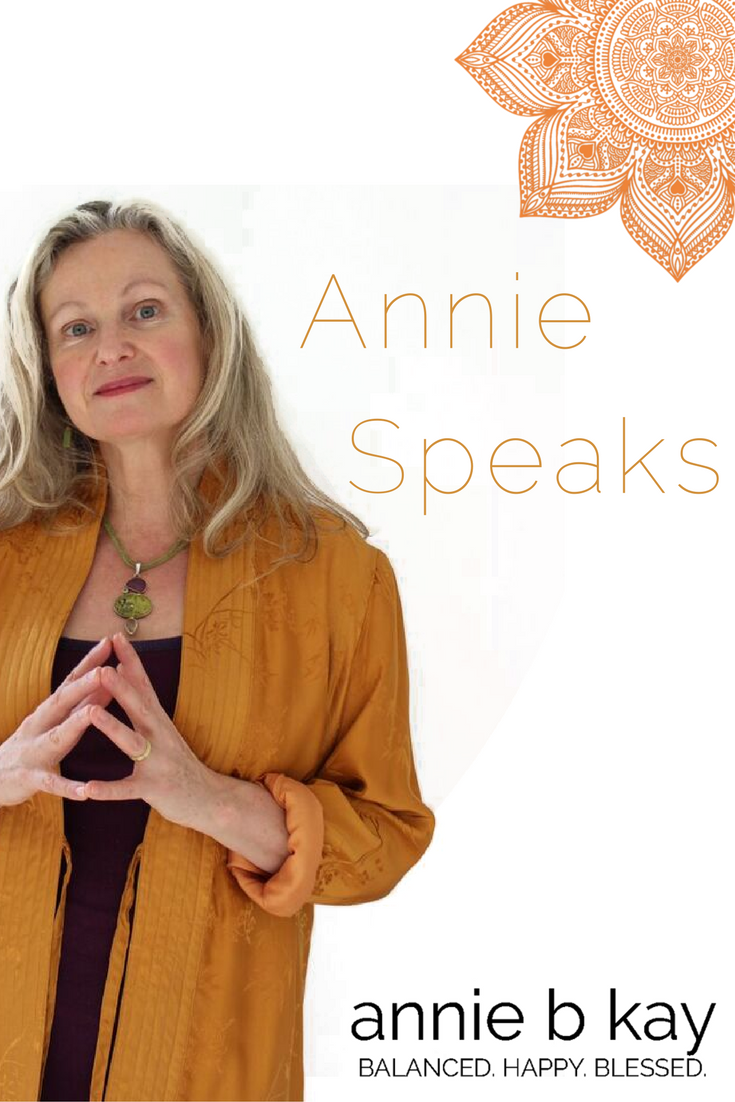
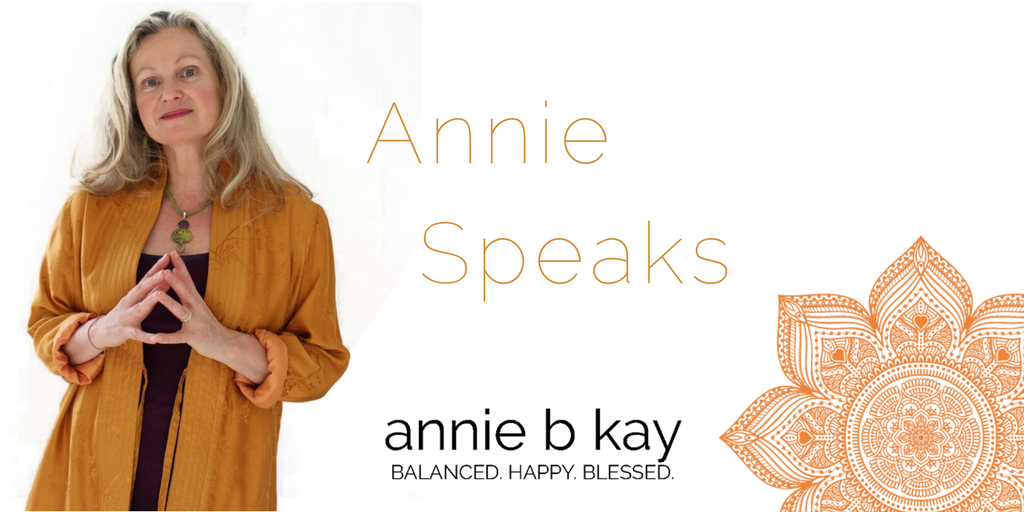
I just finished up a new short video – my speaking reel. Know of someone looking for a speaker for a conference, event or workshop? Pass this and my speaking brochure along. Enjoy!
How do you like it? Let me know what you think in the comments below. Enjoy the day!
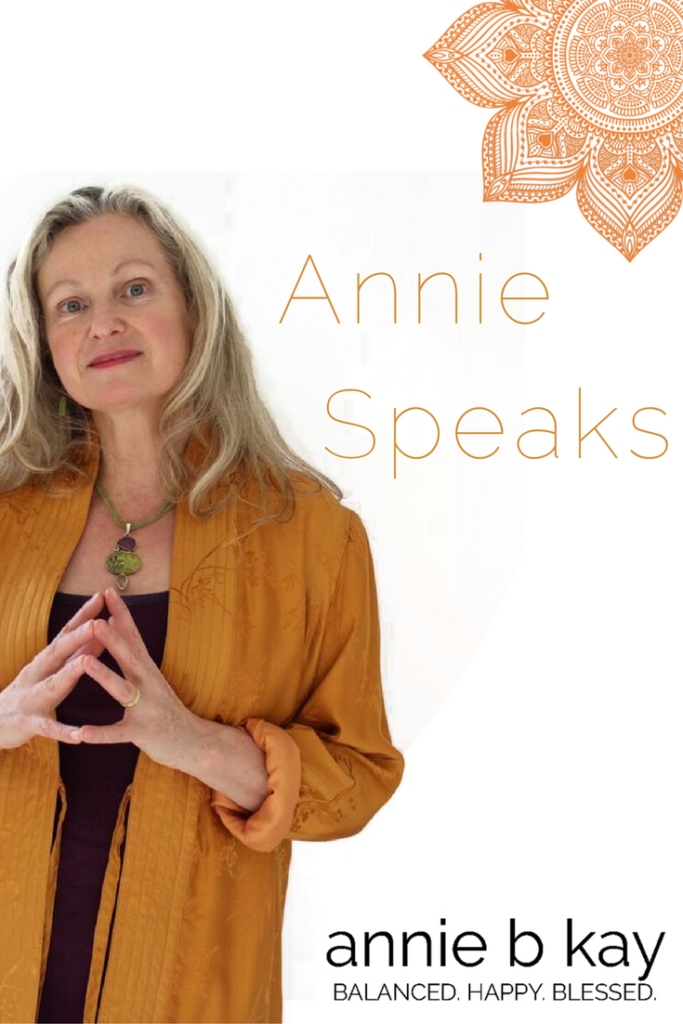
Pinterest







 It’s
It’s 







